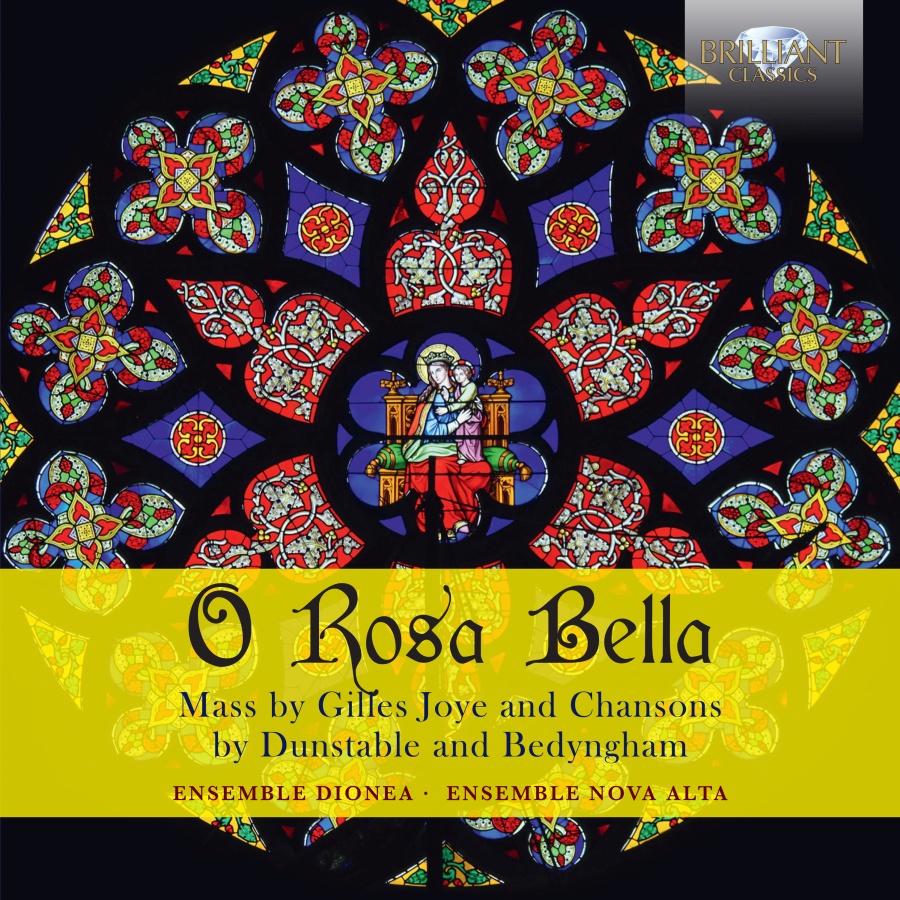
tytuł
O Rosa Bella
wykonawcy
Ensemble Dionea;
Ensemble Nova Alta
Ensemble Nova Alta
nr katalogowy
95529
opis
Reconstructing the life of a 15th century composer often means sorting through the archives of cathedrals and chapels. In the case of Gilles Joye (1420-1483) it reveals that he was a bizarre character whose inability to handle money led him from a life of luxury to bankruptcy and final decline into poverty and illness, he died a pauper. • The mass “O Rosa Bella” was found in the codex of the Castello del Buon Consiglio in Trent, Italy. The mass is for three voices and uses the then popular melody of the chanson “O Rosa Bella” as a cantus firmus. On this recording the various parts of the mass by Gilles Joye are interspersed with chansons on the Rosa Bella melody by John Bedyngham, Alan Hert, Johannes Ockeghem and John Dunstable. • The performance of the mass is by male voices whereas the chansons are sung by female voices. During the sections without text, the ensemble uses a variety of instruments, such as cornet, recorder, lute, harp, fiddle and trombone. • Sung and played by the Ensemble Dionea and the Ensemble Nova Alta, directed by Claudia Caffagni.
• Bedyngham: Gymel O Rosa bella o tu mi maria
• Bedyngham: O rosa bella
• Bedyngham: O Rosa bella, Concordancie o rosa bella cum alius tribus…
• Dunstaple: O rosa bella - Quodlibet: O rosa bella
• Hert, A: O Rosa bella
• Joye, G: Missa Super O Rosa bella
• Ockeghem: Alius discantus Super O Rosa bella
•
Works:
• anon.: O Rosa bella o dulz anima mia
• Bedyngham: Gymel O Rosa bella o tu mi maria
• Bedyngham: O rosa bella
• Bedyngham: O Rosa bella, Concordancie o rosa bella cum alius tribus…
• Dunstaple: O rosa bella - Quodlibet: O rosa bella
• Hert, A: O Rosa bella
• Joye, G: Missa Super O Rosa bella
• Ockeghem: Alius discantus Super O Rosa bella
•
nośnik
CD
gatunek
Muzyka klasyczna
producent
Brilliant Classics
data wydania
30-09-2019
EAN / kod kreskowy
5028421955292

(Produkt nie został jeszcze oceniony)
cena 55,00 zł
lubProdukt dostepny w niewielkiej ilości.
Wysyłka w ciągu 3 dni roboczych
Darmowa wysyłka dla zamówień powyżej 300 zł!
Darmowy kurier dla zamówień powyżej 500 zł!
sprawdź koszty wysyłki














